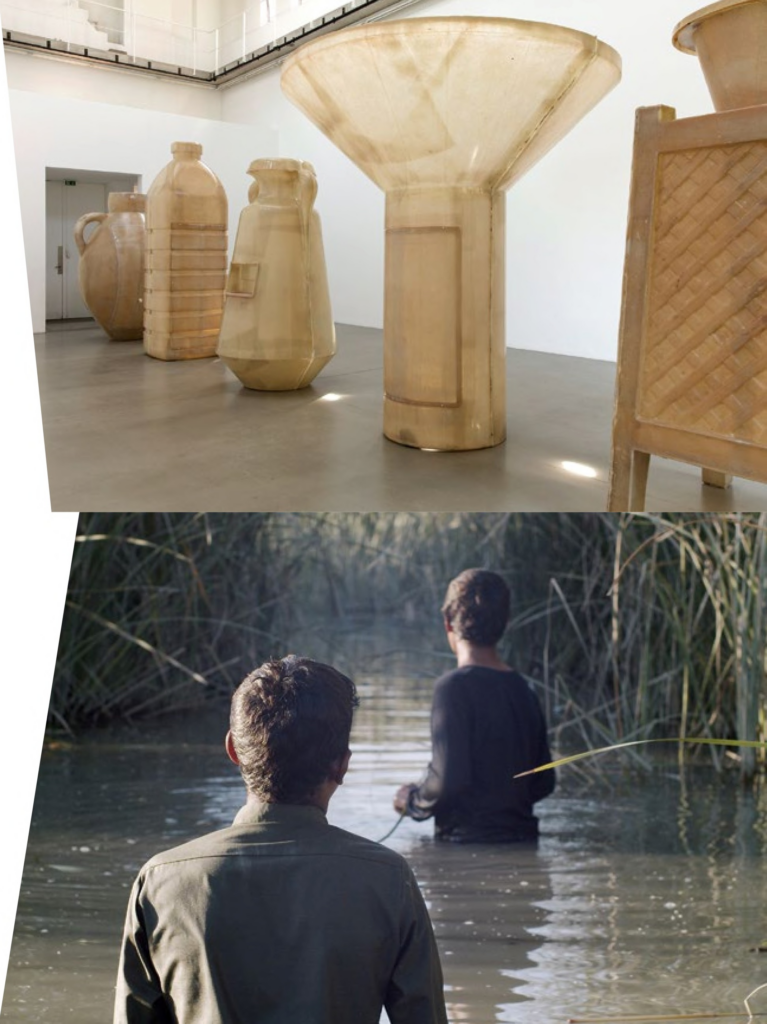ALIA FARID
Born 1985 in Kuwait City, Kuwait, lives and works in Kuwait City, Kuwait and San Juan, Puerto Rico
In Lieu of What Was, Chibayish 2022, Chibayish 2023

Alia Farid works mostly in film and sculpture. Her work is an exploration of material entanglements and the information that can be gleaned from studying materials in relation to environmental and social histories of the Global South. She has a BFA in Fine Artes from la Escuela de Artes Plásticas de Puerto Rico, San Juan, a MS in visual studies from the Visual Arts Program in MIT, Cambridge, and a MA in museum studies and critical theory from the Programa d’Estudis Independents at MACBA, Barcelona. She received The Lise Wilhelmsen Art Award in 2023 and is currently the David and Roberta Logie Fellow at Harvard University’s Radcliffe Institute.
The presented works are part of a series that Alia has been developing on both sides of the Kuwait-Iraq border since 2019. In Lieu of What Was (2019) consists of five drinking fountain-sculptures in the shape of different vessel types used to store or carry water, including a traditional clay pot, a plastic water bottle, a vase-shaped zamzamiya, (used for holy water from the Zamzam spring well in Mecca), an amphora-like jarrah, an emblematic Kuwaiti water tower, and vernacular water cooling system called a heb. Molded in lacquered fiberglass, the vessels mimic the shape and scale of public drinking fountains, in Arabic, sabeel, a distinctive feature of the urban landscape of Kuwait. Their reflective, glass-like surfaces radiate a fragility that invokes the complexities of freshwater resources in the country. Formerly transported on sailboats from the Shatt Al-Arab River in southern Iraq, fresh water today is largely a product of desalination plants. Filmed at the confluence of the Tigris and Euphrates rivers in southern Iraq, Chibayish (2022) and Chibayish (2023) record the artist’s interactions with three young marshland residents. The footage shows Riad Samir and the brothers Jassim and Qassim Mohammed caring for a water buffalo, describing their geography, naming members of their community, and traversing a marsh engulfed by oil infrastructure and industrial waste. Like much of Farid’s work, the film echoes issues of cultural identity, history, colonialism, and the right to remain.
